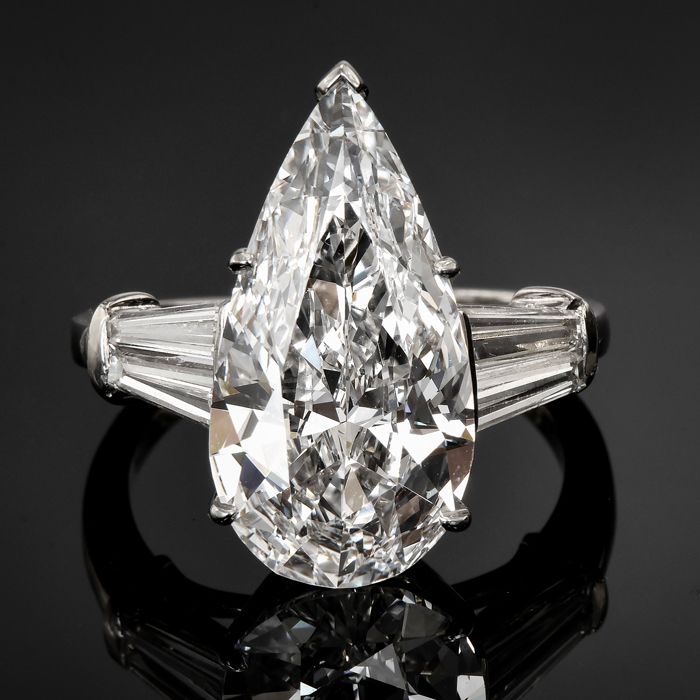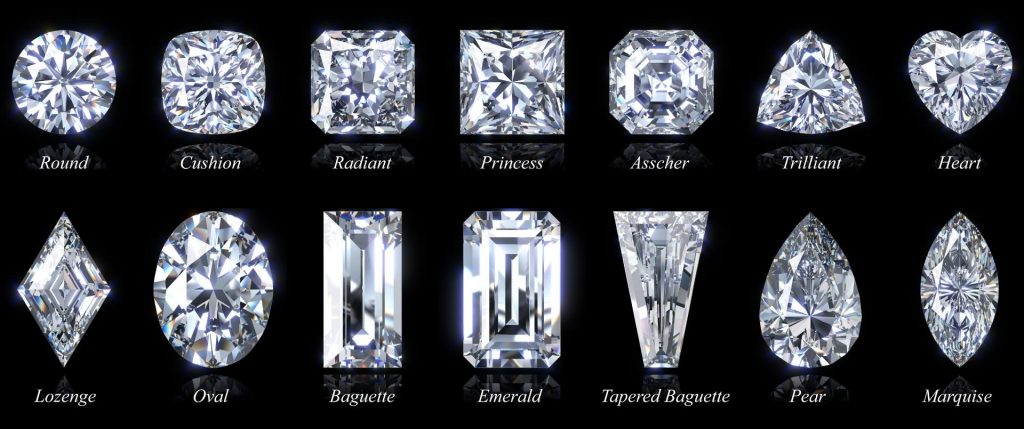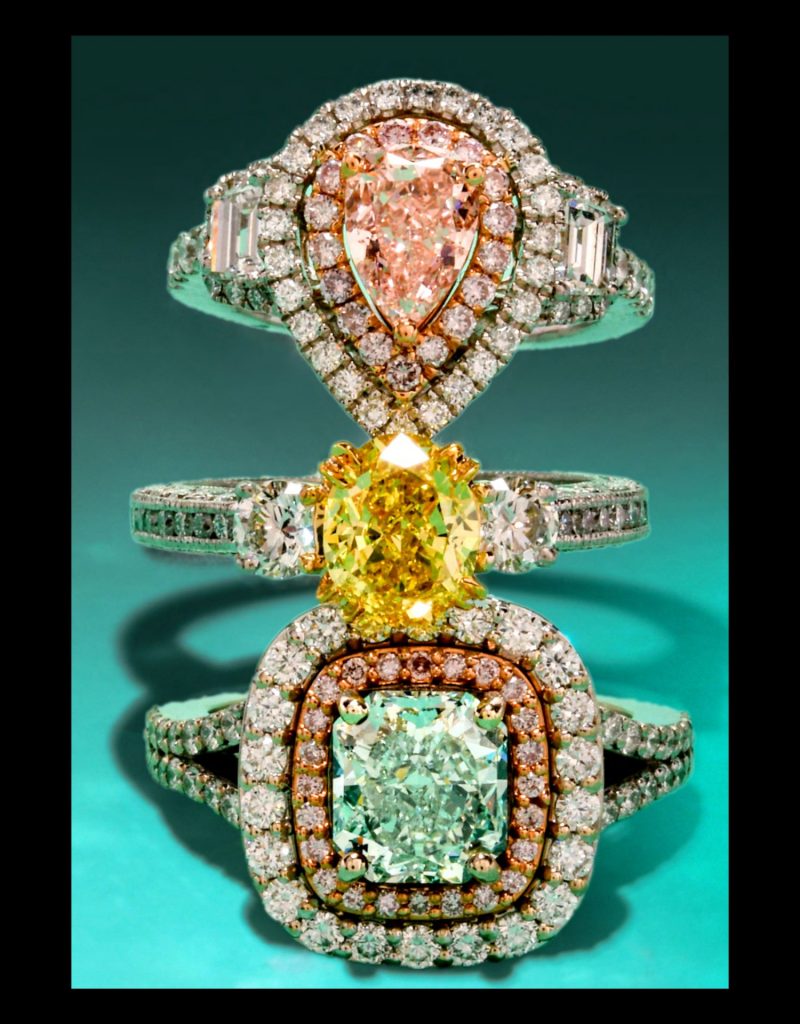
Diamond Prices: What Goes Into the Price of a Diamond?
The quick answer is – a few billion years.
That’s how long it takes a diamond to form underneath the earth – and that’s why natural diamonds are so precious and so rare.
Of course, diamonds are one of the most sought-after gemstones on earth, and it is their brilliance and unique physical properties that make them ideal for use in engagement rings and all types of luxury jewelry. They look magnificent. They are one of the hardest substances on earth, so their durability is second to none. However, the price of a diamond is determined by a complex set of factors that go beyond looks and durability ( and is guaranteed only by aligning yourself with a reputable and certified diamond dealer. But, what affects diamond prices the most?
Carat Weight
If you are looking to purchase a diamond, you might initially assume that the larger the carat, the more expensive the diamond will be. This is a common understanding, often driven by the association of size with value in many areas of life. However, in the world of diamonds, carat weight is certainly an influential factor in price determination, but it isn’t the only one to consider nor how to establish How Much is 1 diamond worth?
To clarify, carats are the unit of weight used to measure diamonds, with one carat equivalent to 0.2 grams. Many people confuse carat with size, but it’s actually a measure of weight. The term “carat” originated from the carob seeds that were used in ancient times on balance scales to measure gemstones. Because these seeds had a fairly uniform weight, they provided a consistent measure for early gem traders.
Carat weight is often expressed in points or fractions. One carat is equal to 100 points, so each point is equivalent to one-hundredth of a carat (0.01). This system allows for precise measurements, crucial when dealing with objects as valuable as diamonds. Other types of gemstones are also measured by carat weight, but different gems of the same weight aren’t necessarily the same size due to variations in their inherent density.
Generally speaking, the heavier the carat weight, the higher the diamond’s price will be. This is because larger diamonds are rarer than smaller ones; thus, a single two-carat diamond will cost significantly more than two one-carat diamonds of the same quality. However, other factors such as cut, color, and clarity also play a vital role in determining a diamond’s final price tag, unless you have a Diamond Price Calculator or a Trusted Diamond Dealer who can provide you with the daily market pricing for the diamond of your choosing by accessing trade sources like Rapnet.com.
Cut
Diamond cut, perhaps surprisingly to many, is often considered the most critical factor in determining a diamond’s value, surpassing even its carat weight. This is because the cut of a diamond is instrumental in enhancing its overall appeal, symmetry, and, ultimately, its worth. Of all the diamond 4Cs – Carat, Color, Clarity, and Cut – the cut is the most complex and technically demanding to evaluate. It requires a deep understanding of how light interacts with the diamond’s facets, and it calls for the utmost precision in execution.
The cut, or the “make” of a diamond, is the element that brings a diamond to life. A master diamond cutter can unlock a diamond’s inherent beauty by striking a perfect balance between symmetry, facets, proportion, and polish. This delicate task is equal parts art and science, a dance between preserving the diamond’s weight and maximizing its potential for brilliance. A well-cut diamond is able to reflect and refract light in a way that is truly mesmerizing, turning a simple carbon crystal into a gem of extraordinary beauty.
Clarity
Diamond clarity is another critical determinant of a diamond’s worth. Clarity refers to the existence or nonexistence of internal or external imperfections, also known as inclusions or blemishes. These microscopic features are nature’s fingerprints and make each diamond unique. However, the fewer flaws a diamond has, the higher its clarity grade will be, and consequently, the more valuable it becomes.
Diamonds with high clarity grades are a rarity and can command premium prices. Naturally, the least flawed diamonds are the most highly prized and, hence, the most expensive. But what does it mean for a diamond to have “few or no inclusions”?
Essentially, inclusions are internal characteristics that occur within a diamond. They could be crystals of a foreign material or structural imperfections such as tiny cracks. Blemishes, on the other hand, are external features found on the surface of the diamond. They could be scratches, pits, or chips.
Color
The color of a diamond plays a significant role in determining its price. Though it may seem counterintuitive, when it comes to traditional white diamonds, it is actually the absence of color that is most sought after. The Gemological Institute of America (GIA) grades diamond color on a scale that ranges from D (colorless) to Z (light yellow or brown). The closer a diamond is to being completely colorless, the rarer and, consequently, the more expensive it is.
The color grading system for diamonds was established to create a standardized language for discussing these precious stones. At the top of the scale, a ‘D’ graded diamond is considered colorless, offering exceptional whiteness and purity. As you move down the scale through to ‘Z’, diamonds will exhibit a progressively more noticeable yellow or brown tint. It’s important to note, however, that many of these color distinctions are so subtle that they are invisible to the untrained eye, but these slight differences make a very big difference in diamond quality and price.
There you have it. The 4cs, as they are commonly known, are important in determining what you will pay for a particular diamond. When you purchase a diamond, it is critical to decide if you prefer a stone with outstanding clarity, the one with the best cut, or perhaps the largest stone you can afford. Many of the flaws in a diamond are not visible to the naked eye, so if you are not concerned about clarity, then carat weight can be your first consideration. It is your priorities and budget that will determine your final purchase.
What else comes into play?
- Market Volatility
The market demand for diamonds also plays a significant role in their price. The diamond market is subject to fluctuations based on economic conditions, consumer demand for a certain cut or shape, and cultural factors. In times of high demand, diamond prices can increase significantly. The opposite is true when demand drops, even for diamonds with similar physical characteristics. - Where Was the Diamond Mined?
The origin of a diamond can also affect its price. Diamonds mined from certain geographic locations or under certain conditions may be more valuable due to their rarity or unique characteristics. For example, diamonds that came from the Argyle mine in Australia are known for their pink or red hues, making them highly sought after by investors and collectors. - When all is said and done, the price of a diamond is determined by a complex set of factors. The 4Cs of diamond quality, consumer demand, origin and marketing all play a significant role. As a result, diamond prices can vary over time. Understanding the interplay of all these considerations while working with a reputable jeweler, who has a trusted diamond seller reputation and will help you make an informed decision, ensuring the best value for your money.
We’re here to help you:
The Diamond Gem Team at Dover Jewelry Miami Brickell specializes in Custom, Modern and Vintage Diamonds, and Engagement Rings. Our staff of Gia Gemologists and Master Jewelers welcome your inquiries and the ability to answer all your questions about that Singular Diamond you seek. The only jeweler on Brickell in Miami Florida – Contact Dover for your Complimentary Discussion on the Value of your Diamond.
Dover Jewelry & Diamonds at 1000 Brickell Ave Suite 100 Miami, FL 33131 1.877.777.6111 | contact@doverjewelry.com





